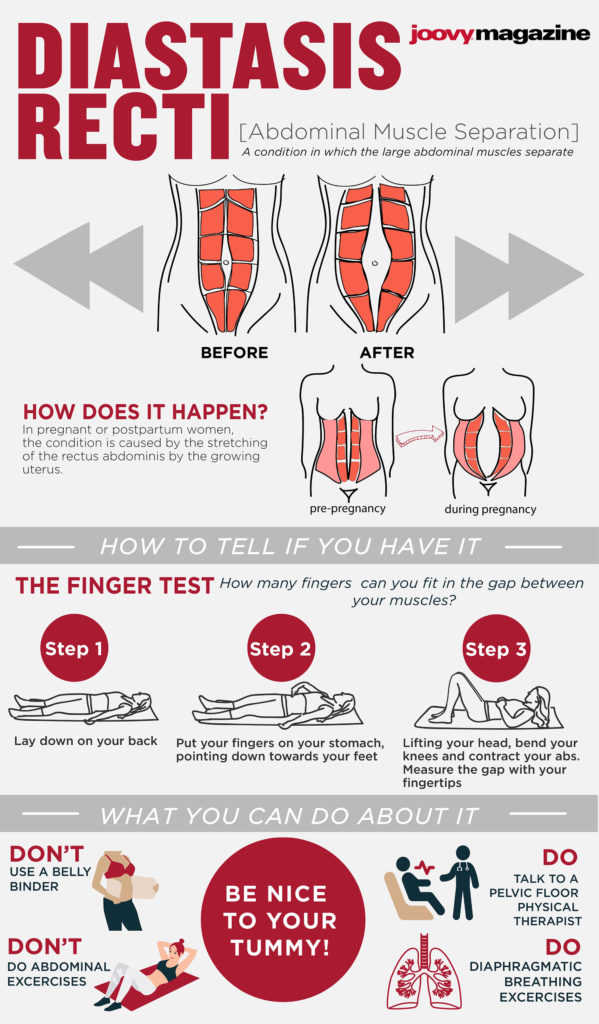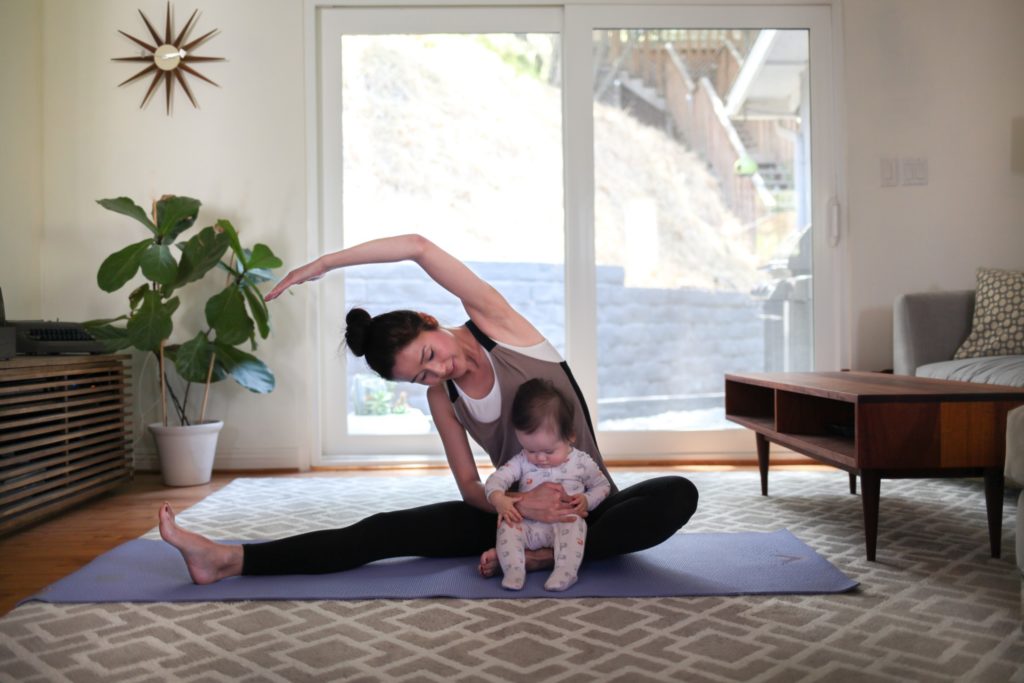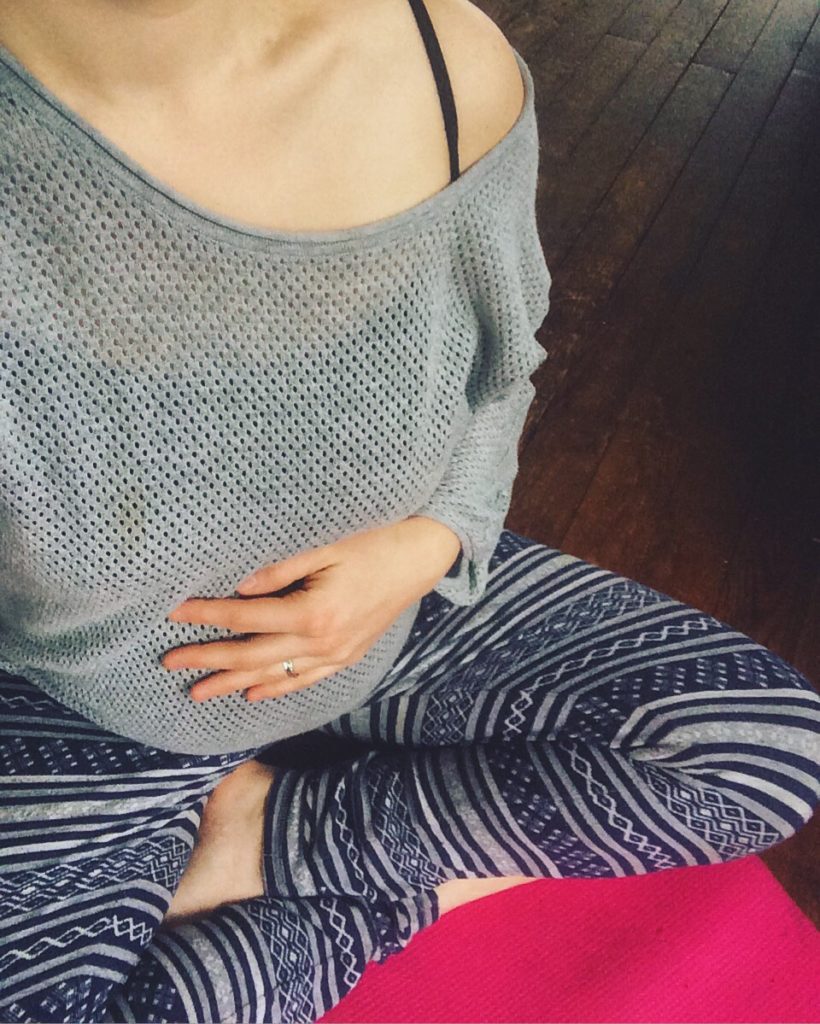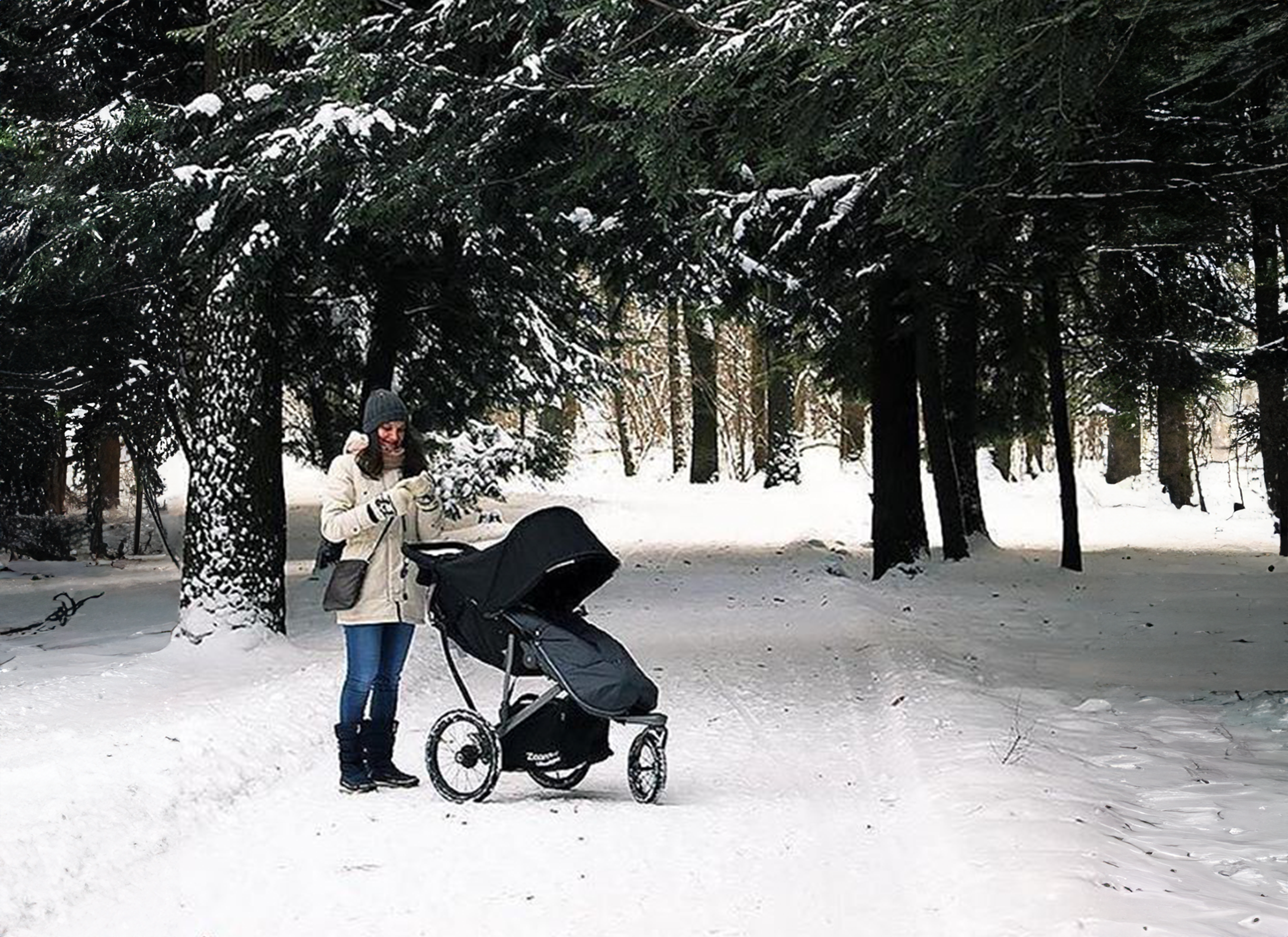Why Postpartum Moms Shouldn’t Do Crunches
In America, it’s standard practice to clear a postpartum mom for normal day-to-day activities and exercise if she’s no longer bleeding or showing signs of infection at six weeks.
The reality?
Most women spend months, even years, physically recovering from their pregnancies. The postpartum effects of pregnancy can vary from the psychological to the downright psychotic, including postpartum depression, and the uber-weird and super common phenomenon of abdominal muscle separation.
You’re a force of nature, mama. Your body has done the seemingly impossible, defied the laws of physics, and changed its very structure to grow and successfully birth a brand new human being.
You go, mama.
So hit the brakes before you hit the gym mat because riding that low self-esteem train to the gym too quickly can actually do more harm than good.
What Is Diastasis Recti?

One of the most common side effects postpartum moms find themselves dealing with for months and years after the baby is kind of a creepy one: diastasis recti. This is when your abdominal muscles literally separate to make room for the baby.
After you have your baby, your uterus starts contracting back down to its normal size, from a watermelon all the way back down to a little orange nestled in your pelvis.
But those abdominal muscles don’t just magically fuse back together. In more extreme cases, the muscles are so separated that moms actually experience something known as “doming” in which the stomach forms a sort of rounded, triangular shape when the muscles are engaged. This is because, even though your abdominal muscles are contracting, they’re still separated, and your internal organs are creating a distended-looking belly.
I know, weird.
Tips from Our Expert: Postpartum Abdominal Recovery
If there’s one thing that’s definitely NOT recommended for postpartum moms, it’s jumping right back into crunches. Evaluating your pelvic health and the state of your abdominal muscles is critical to not injuring yourself during exercise.
There’s a lot of misinformation floating around out there, so I decided to chat with an expert to get the real scoop on what exactly is okay for postpartum moms to do in the gym.
Meet Melia Perrizo, Pelvic Floor Physical Therapist
That’s right — pelvic floor physical therapists are totally a thing.
10 years ago, Melia started her career in physical therapy. Over the years, she saw an enormous amount of lower back pain in her patients which lead her to mentor a specialist in pelvic floor work.
What she learned fascinated and surprised her: treating weakened pelvic floor conditions helped with lower back pain in her female patients.
She turned her focus to helping postpartum mothers get back to lives of fitness, working with everyone from seasoned athletes to hobbyist home exercisers. Now, Crossfit trainers refer their postpartum moms to her, and she’s a trusted expert in what she does best: getting postpartum moms back into the gym safely.
The Problem With One-Size-Fits-All Postpartum Care

My conversation with Melia was incredibly eye-opening. As someone who spends a lot of time working in the pregnancy space, I thought I’d heard it all but was amazed at how much I didn’t know.
What I learned from her was that our medical system is designed to clear mothers for uterine health but has little, if anything, to do with our actual physical readiness to engage in normal activities.
The result is that women go back to their normal fitness routines too early at six weeks, and three to six months later, begin to have issues.
So What the Heck Is a Pelvic Floor Anyway?
Your pelvic floor isn’t just that thing that goes to hell when you have a baby, it’s a set of muscles that play a role in everything from your rockin’ set of mom’s abs to your lack of lower back pain.
This set of muscles is literally located underneath your pelvis, hence the name. In women, these muscles carry a lot of weight for a lot of really special organs: your uterus, bladder, a vagina — all of the important stuff in the nether regions.
But what happens during pregnancy is these muscles get put under a lot of pressure. They can get a little overstretched, worn out, and weakened and take a little while to bounce back. An over-exhausted set of pelvic floor muscles, if not properly addressed, can then lead to issues ranging from lower back pain to bladder incontinence.
Why Moms Should See a Postpartum Pelvic Floor Therapist
Melia’s specialty threw me for a loop, particularly when she spoke about her deep connection with solving lower back pain.
I mean, I hear pelvic floor, and I think Kegels and peeing yourself when you laugh too hard. But back pain? I didn’t see the connection.
But the reality is that these pelvic floor muscles play a critical role in how your body functions — it’s like your internal organs’ foundation. And when they’re weak and not properly cared for, the whole house starts to go to hell.
Melia told me that, in France, pelvic floor physical therapy is the standard of care. “Absolutely every postpartum mom should see a pelvic floor physical therapist. Nobody wants to talk about pelvic floor health, but this is absolutely critical to safely getting back to exercise after baby.”
Why Kegels Aren’t Always the Answer
I laugh a little guiltily over the phone with Melia as our conversation progresses because when I think of pelvic floor health, the only thing that comes to mind is Kegels.
So I ask her — how do Kegels fit into pelvic floor health? Is that something postpartum moms can be doing on their end to speed recovery?
Her answer is surprising:
“More Kegels is actually not the answer. What I’ve found is that it can actually do more harm than good by overworking those muscles. Unless there is diagnosed dysfunction, isolated Kegels are not something women need to be doing every single day.”
Just like you wouldn’t do bicep curls on your own to heal a shoulder injury, Kegels are most effective when done in conjunction with other exercises and definitely don’t hold the exclusive keys to the kingdom of pelvic floor repair.
Diagnosing and Treating Diastasis Recti
Melia says that abdominal wall separation is completely normal and is by nature’s design, meant to happen.
“Going back to fitness too quickly is the real problem here, not the abdominal muscle separation. This is perfectly normal, but we have to give our bodies time to properly heal,” says Melia.
Treating diastasis recti with a pelvic floor physical therapy involves a much more comprehensive approach than most would realize, taking into account the massive shifts that happen when you create something the size of watermelon then promptly eject it.
Here’s how to determine if you have diastasis recti:
- Lie completely flat on your back on a firm surface like your floor.
- With your fingers pointed slightly down towards your feet, press your fingers gently into the space above your belly button and feel for your abdominal muscles.
- Bend your knees with your feet flat on the floor, exhale and lift your head slightly.
- As your abdominal muscles contract, use your fingertips to feel and measure the space between them.
- Also, feel for depth — how deep can you sink your fingers into your abdomen (creepy, I know), and how much tension can you feel there? The more tension, the better.
The bigger the gap between your muscles, the larger the separation, and the more work you may have to do to repair your muscles before hitting the gym again.
“Don’t start by using a belly binder,” says Melia. “They can create pressure imbalances, cause bladder leakage, and even uterine prolapse, where your uterus starts to descend through your cervix! For most people, it’s just not a good idea.”
Using Breathwork to Repair Diastasis Recti

Instead, Melia suggests working with a pelvic floor physical therapist and starting with breathwork, like the exercises on the Fit2B platform.
“If you’re in a lot of pain and really struggle to control your abdominal muscles, breathwork is where you need to begin. Contracting those muscles for long periods of time isn’t ideal, so don’t start with planks, start with your breath.”
Postpartum women often struggle with back pain and difficulty exercising because the abdominal muscles have separated, but sometimes those nervous pathways have also been turned off during childbirth.
“Sometimes, when we’re in a lot of pain during childbirth, our bodies’ natural self-preservation reflex is to stop contracting the muscles in the region that is causing us pain. It keeps us from overworking the area, but it also takes away our control of that region,” says Melia.
Diaphragmatic breathing exercises instead focus on reactivating with conscious movement what was once an involuntary movement and turning those abdominal muscle systems back on so they can start working their way back together.
These breathing exercises coupled with small arm and leg movements help to retrain the abdominal muscles and get them safely back into position, so postpartum moms can resume their normal fitness routines.
Have you ever been to a pelvic floor physical therapist? Tell us how it changed your recovery in the comments below!
You can learn more about Melia’s work in her practice here.






